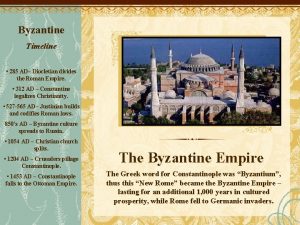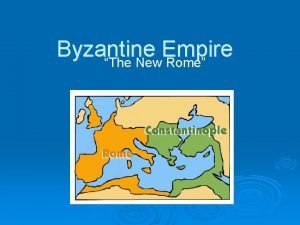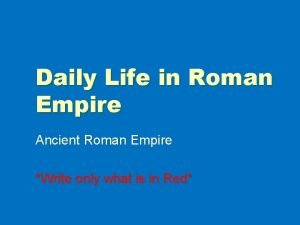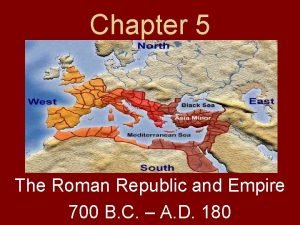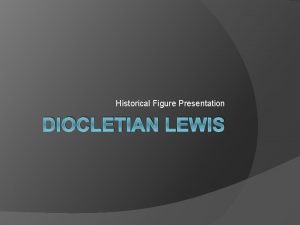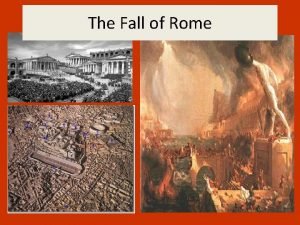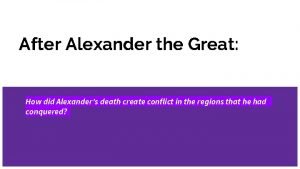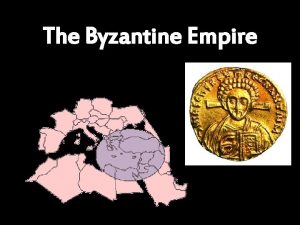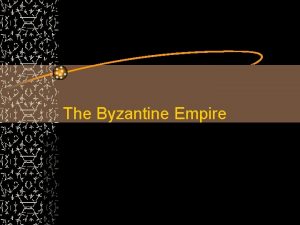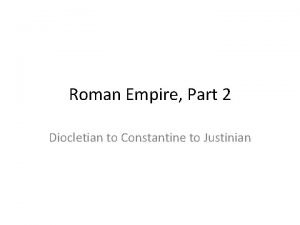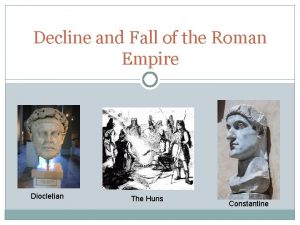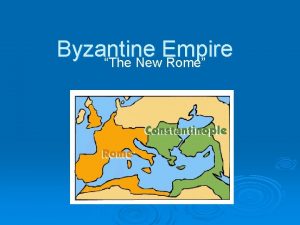Diocletian Split the Roman Empire Knew it was









- Slides: 9

Diocletian Split the Roman Empire Knew it was way to large for one person to run. 1

300 A. D. The Roman Empire was divided Western Half (Rome was the capital) Eastern Half known as the Byzantine Empire (Constantinople was the capital) 2

Constantinople Between the Mediterranean and the Black Sea Linked Europe to Asia 3

After Rome collapsed (476) a new Byzantine emperor named Justinian came to power In 527 A. D. Justinian I began to plan ways to make the Byzantine Empire as great as the Roman Empire had been in the past. With a strong army, he conquered: Territory that Rome had lost Alexandria in Egypt Carthage in northern Africa Athens in Greece 4

5

Justinian Code Justinian reviewed Roman Law (Twelve Tables) and created a simpler legal code. It was called the Justinian Code Many of the laws reflect the point of view of his wife, Theodora encouraged her husband to make laws that were fairer to women. Theodora assisted her husband in choosing government leaders. 6

Byzantine Economy Based on the map of the Byzantine Empire, why was Constantinople a center of trade? Which regions and continents were connected by Constantinople? New industries – silk. Justinian ordered silkworm eggs smuggled from China, along with mulberry trees. This ended the monopoly China held on the world’s silk trade. 7

The split of Christianity In the Byzantine Empire, Orthodox Christians had strict beliefs. They thought icons (pictures of Christ) were forbidden in the Ten Commandments. In Western Europe, few people could read or write, so church leaders believed the use of icons could teach about Christianity. 1054: Christianity divided (the Great Schism) Byzantine: Eastern Greek Orthodox Church Western Europe: Roman Catholic Church 8

The Great Schism of 1054 Eastern Greek Orthodox Church Based in Constantinople Official language – Greek Church led by a Patriarch referred to as a Bishops couldn’t marry. Priests could marry. Scriptures were the final authority on all matters. Emperor or political ruler was above the Bishop. Rejected the use of icons. Roman Catholic Church Based in Rome Official language – Latin Church led by a Pope referred to as Father. Church leaders could not marry. Only Pope and Bishops could interpret the scriptures. The Pope was the Supreme head of Church - above any political ruler. Religious icons accepted. 9

